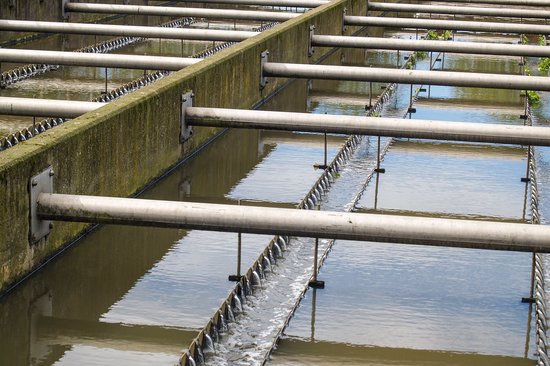Principle of sedimentation
The cleaning of water contaminated with solids is mostly done with filter systems. They work according to the sedimentation principle. Suspended matter is retained in the filter and deposits. The filtered water can then be discharged and reused. Nature serves as a model for this mode of operation: bank filtrate is water that constantly seeps through the river bed and soil into the groundwater and is cleaned as it passes through the layers.
Filter systems are used in almost all areas of water treatment, including:
- Drinking water treatment
- Wastewater treatment, e.g. as pre-treatment or for final treatment after biological activation processes
- industrial process water treatment, such as in the paper and pulp industry
Different types of construction
Various types of systems are suitable for obtaining water free of suspended matter. With gravel and sand filters, the wastewater is passed through a filter system filled with mineral material of increasingly finer grain size (filter principle "from coarse to fine").
In order to meet the requirements of the particular process, ABIONIK builds all filter systems individually according to the wishes and needs of the customer. Especially noteworthy are lamella separators or lamella lamella separators (also: lamella separators, lamella separators or lamella separators).
Function of the filter systems
Contaminated water is fed into a specially dimensioned inlet chamber. From there it flows upwards between the filter elements. Sedimentation takes place during the process: the solids settle on the lamellas and slide into the sludge funnel of the tank bottom. The sludge collected here is drawn off and thickened.
The control of the inflow is decisive for efficiency and economy: All filter elements must have an even flow through them and the detachment of already sedimented particles must be prevented.
The advantage of ABIONIK filter units is that the tanks are made of plastic and therefore more corrosion resistant than tanks made of other materials.












